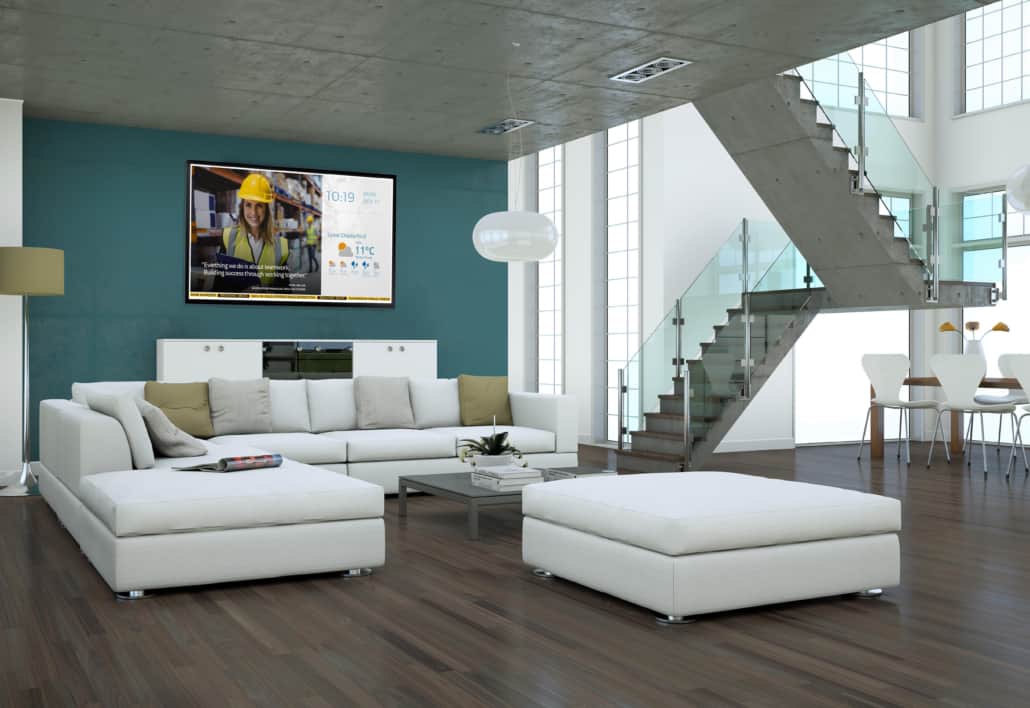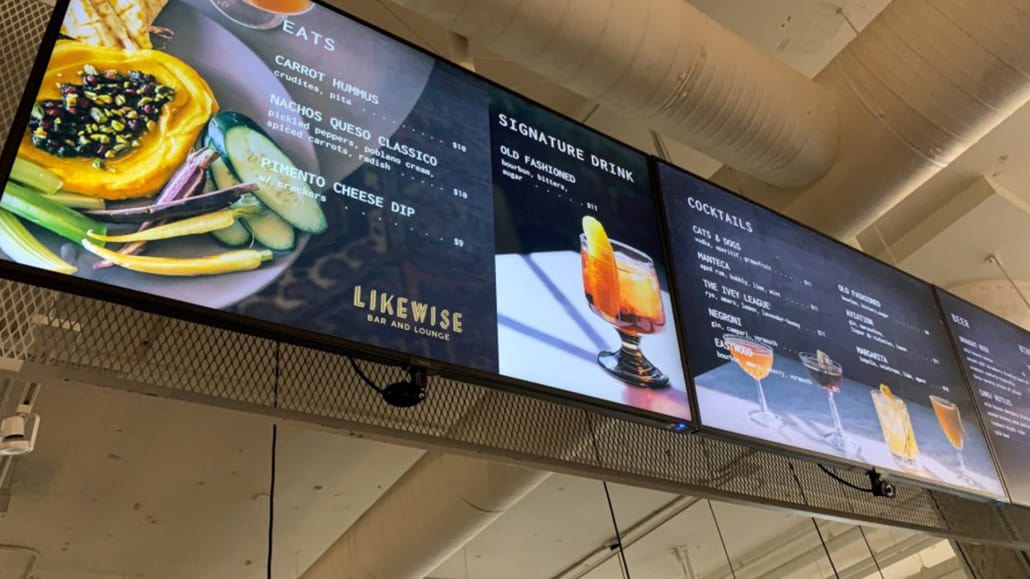2019 Analysis and the Top 3 2020 Digital Signage trends

2019 review
Summary:
Among the dreaded uncertainty and what has become a hated word of Brexit, which has been hanging over Europe (mainly the UK) like a dark cloud there is a silver lining. Certainly for Signagelive, 2019 has been the best year for the company for a variety of reasons. Turnover is up and this is the best ever year on record for us. There have been plenty of new important developments with partners, internal growth of our team, proactive focus in Europe and Australia.
Every year we hear news about acquisitions both in system integrator and CMS lands. 2019 was no exception on both fronts. At Signagelive however, our growth has continued to be organic, aiming to reinforce our API first platform functionalities for enterprise-grade digital signage through our easy to use user interface. A CMS platform does not need to show its complexity in order to show its usefulness and how powerful it can be. Indeed with our API headless CMS strategy, this is exactly the aim for Signagelive.
Multi-platform strategy – ‘early adopters’
The year 2013, among other memorable events (passing away of Nelson Mandela) for Signagelive this year represented a decisive step in a true multi-platform strategy approach. The Samsung and Signagelive partnership began, followed by LG, BrightSign, AOPEN, Philips adding to an already supported number of external media players. From the beginning, the thought process for Signagelive was to make digital signage accessible to the masses. In order to do that it is clear you have two options:
One: do it all yourself (been there done that when the company was first set up in 1997). Some still do it now.
Two: create an ecosystem of partners to freely integrate both hardware and other software platforms within the Signagelive world. From early on Signagelive has taken this approach to grow and provide services to our clients.
The Result: end-users and partners get the best of both worlds without hefty infrastructure costs and more importantly have an added flexibility.
Fast forward to 2019 and in the digital signage field (among others) this is now a recurring theme. Not only have CMS companies adopted this strategy, but also hardware giants like Samsung, LG, BrightSign and many others.
Why? Because it makes sense not only commercially but also technically. Let people be good at what they are good at and collaborate with the best in breed partners to deliver great digital signage solutions. Of course if you have the money then you can also buy everything and do it your own way, but generally, this approach is rigid and does not leave much flexibility with any technical changes as the years go by.

API headless CMS strategy – what does this mean?
Aside from all the wonderful technical capabilities and functionalities, this kind of strategy can give, it is simpler to think of it for its benefits.
Most probably 99% of the readership of this article will have purchased a car at some point in their life. We all know the process we have gone through to find the right match. Colour, heated seats, sat nav, alloy size etc etc etc. The list is endless. So think of Signagelive as the engine of that Audi, Skoda, Ferrari even. We sit under the hood of the car. What you wish as extra, additional features are down to the end-user to choose and the partner to integrate. This is exactly what an API headless CMS strategy means.
Perhaps your client has reached the stage where digital posters in retail are simply not enough? How do they really see and understand the return on investment in digital signage? Did their project even meet the criteria for their end-user? Did anyone see their campaign? If they did, what did they do as a result of it? What if it wasn’t aimed at the right audience? Do you even know who your audience is?
NEC ALP and the Signagelive integration caters for exactly those kinds of questions to be answered.
Signagelive’s deep integration with NEC ALP enables real-time digital signage content playback decisions and analytics providing network owners with much-needed business intelligence. NEC ALP optimises message delivery with automated content creation and recommendations for targeted customers using AI-based analytics, enabling retailers to customise their content based on age, gender, events and weather. This type of data is usually only normally reserved for e-commerce and mobile applications. However, with NEC ALP the resulting real-time and contextual digital signage solution enables retailers to combat the face head-on the commercial challenges resulting from online retailers.
Quividi and the Signagelive integration is another technical advancement in the merge of data with digital signage.
The Signagelive integration with Quividi works using RTEs (Signagelive’s Real-Time Events), and while our CMS displays the content, Quividi analyses the audience – our integration then links the audience to the content.

AdMobilize too.
The AdMobilize [AI company for DOOH] solution takes the Signagelive Proof of Play data and maps it against their Audience Analytics data to provide users with detailed reports on how many viewers each piece of content had, who saw it, and how they reacted. Therefore there are two end results:
- Proof of Play tells us where the content showed
- AdMobilize tells us whom it showed it to
Use cases for all of the above:
Retail – track the impact of your campaign and use the data to produce better results and increase ROI.
DOOH – demonstrate to advertisers exactly how many people saw their content.
Corporate Communications – measure the mood of individuals in your organisation and gauge the effectiveness of your internal messaging.
Museums and any experiential sites – incorporate audience analytics and real-time triggers to engage the public
The recurring theme is, we are better together rather than two standalone platforms. The end-user wants to see the finished result, know that the campaign for advertising has targeted the right audience and got increased sales because of it. The simpler this can be the better the adoption from the end users.

Trends for 2020 and beyond
Intelligent digital signage – don’t waste your data
It is of no surprise that intelligent data-driven digital signage has been and will be on the cards for many months to come. The biggest headache for anyone will be to understand what that data is and how they want to use it?
Real-world scenarios – the power of suggestion
- Audience analytics Retail store: recognising gender and age can be triggered in real-time to change the content on the displays. Imagine Christmas shopping in a shopping mall and the free-standing totems highlighting the Christmas promotion for Jewellery shop X located in the mall. Perhaps you are yet to purchase that engagement ring? The same message is reinforced outside of the store of Jewellery shop X. Create a digital ticket and see the specialist for your needs. Within the hour you’ve got what you need and the soon to be wife will be very happy on Christmas day.
The challenge: is always to drive footfall and a connected message across different touchpoints to engage with the target audience. Christmas is one of the times in the calendar year which always highlights this challenge more so than any other time.
The solution: a mix of audience analytics and real-time targeted content for your audience = increase in sales through better customer engagement and experience.
Menu board implementation QSR: The same shopping mall at Christmas time, lots of people/footfall means an automatic increase in sales right? Not necessarily and unfortunately not the case. But I have digital menu boards won’t that help?
The challenge: How can a bar capitalise on the footfall coming into the shopping mall to increase sales?
The solution: Audience analytics connected to real-time data-driven menu boards.
NEC ALP is an anonymous business intelligence platform that provides key insights based on human behaviours. It can help physical spaces become personal, efficient, dynamic and smart. Read about this specific case study here [Living Retail Lab info]

Conclusion:
The technology is there to get the most out of your digital signage investment, whether that is real-time content being triggered based on certain events or movement-based digital menu boards to increase sales. The hardest choice will be to select the right partner who can deliver the solution in a seamless ecosystem, fit for now, as well as the future.
This is exactly why the ‘AV as a Service’ model has gained more and more traction in the industry. Technically capable managed service providers (like BIS/Econocom and some others) understand all of the pieces of the jigsaw puzzle AKA client requirements and are able to work with best of breed technologies seamlessly to provide a profitable return upon investment.




